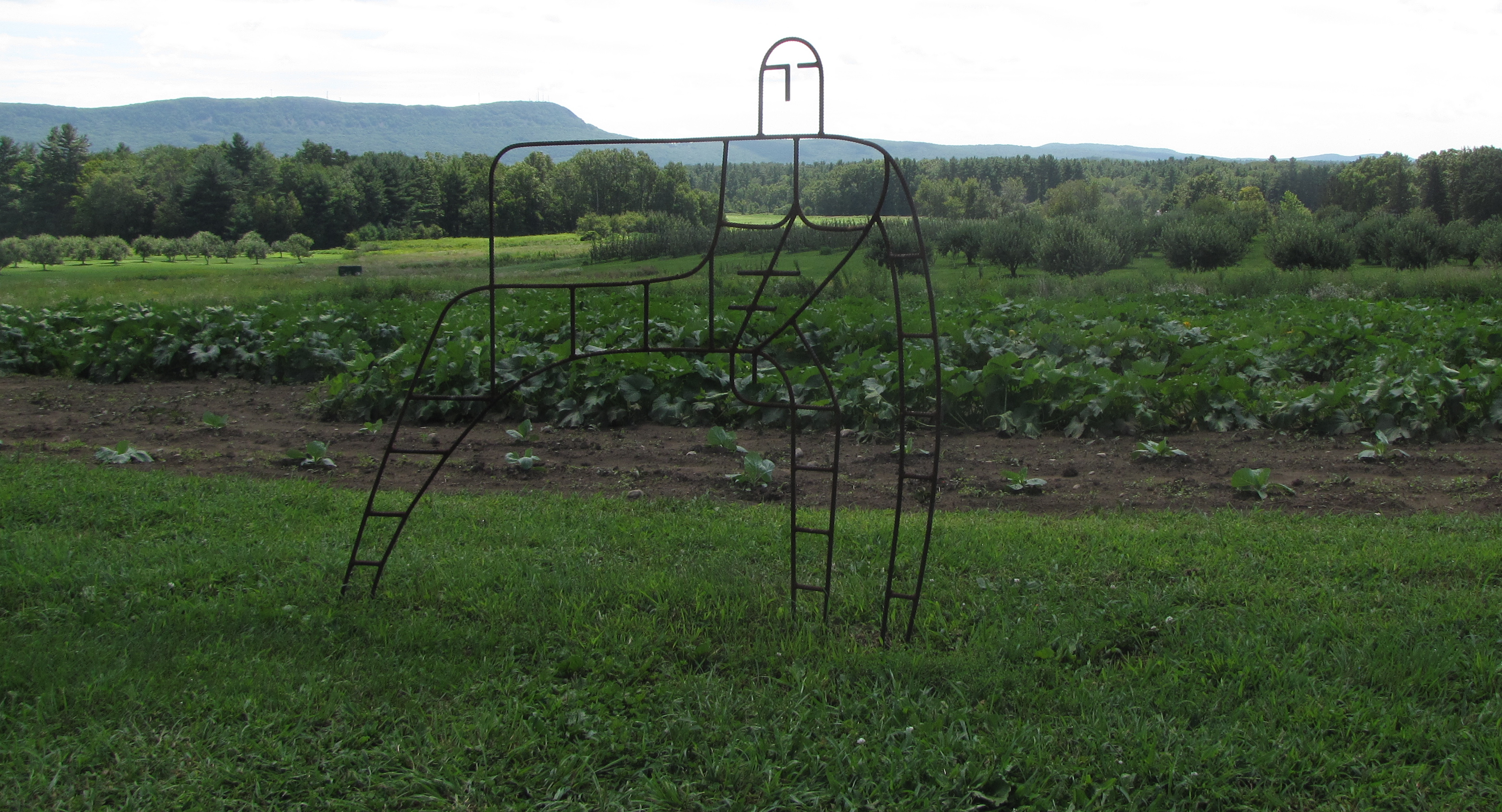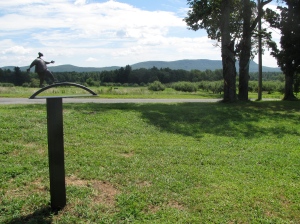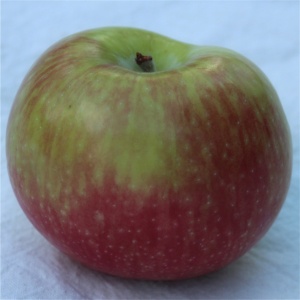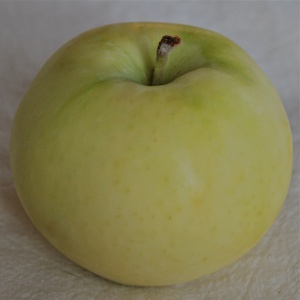
THE APPLE’S unparalleled versatility as a food is well documented. Apples are good eaten fresh or cooked, can be served at any course of any meal, and pair well with most any food, sweet or savory. But apples are also cultural icons cherished for their beauty and history, the subject of a number of our most enduring stories and myths.

A web search for “images of apples in art” reveals hundreds, if not thousands, of pictorial renditions of this worldly fruit, including several by such noted painters as Claude Monet (Apples and Grapes), and especially Paul Cézanne, for whom the apple held great fascination (Dish of Apples, Still Life with Apples and Pears, Still Life with Jar, Cup, and Apples, and Still Life with Apples and Oranges).
The orchard can be a beautiful setting for sculpture, too. Art in the Orchard is an installation of 20 sculptures nestled in among the apple trees and gardens at Park Hill Orchard in Easthampton, Massachusetts, with a gorgeous backdrop of the Holyoke Range. The artwork ranges from large to small, realist to abstract, serious to whimsical, reflecting materials as diverse as the artists’ interpretations. It is an innovative way to heighten the already powerful sensory experience of the orchard, combining food for the body with food for the soul.
***
BEFORE REFRIGERATION, most apple growers planted many varieties to extend the season, some that ripened early or late, others because they stored well over the winter. As people have become more interested in learning about and tasting unusual apples from the past, some of these long-forgotten varieties are experiencing a revival. Three examples are Red Astrachan, Melba, and Yellow Transparent.

Red Astrachan is one of the earliest varieties to ripen; in parts of New England its season has already passed. A medium-sized apple, it has a thin, yellow skin streaked with shades of red, covered with a bluish bloom.
Red Astrachan is moderately juicy, with a tart flavor that makes it more attractive for cooking than fresh eating. It is considered especially good for pies and applesauce. It does not store well, and its crisp flesh can become mealy soon after they are ripe (they are even known for breaking their skin when over-ripe).
A Russian apple, Red Astrachan migrated westward, first to Sweden, on to England in 1816, and arriving in America in 1835, one of four Russian apples (with Alexander, Duchess of Oldenburg, and Tetofsky) received by the Massachusetts Horticultural Society from the London Horticultural Society.
Red Astrachan’s popularity peaked around 1900, when it was widely grown around the world. It was especially popular in the American south. Its parentage is unknown.

Melba’s path to New England was southward; it was developed in 1898 by the Central Experiment Farm in Ottawa, Canada, and introduced commercially in 1909. Lightly sweet with a hint of tartness, Melba’s fine, white flesh and thin skin give it a pleasing crispness, and it is good for both fresh eating and cooking. Its skin is yellow to lime in color, with streaks and blushes of pink and red.
Melba’s parents are McIntosh and Liveland Raspberry. Also known as Lowland Raspberry or Red Cheek, Liveland Raspberry is an early season apple that originated in the Lithuanian province of Lievland. Now rare, it was introduced into the United States in 1883. While McIntosh contributes to Melba’s fragrant, sweet-tart flavor, Liveland Raspberry influences its early ripeness, and supplies its tender flesh and thin skin.

Yellow Transparent, like Red Astrachan, has Russian roots, imported to the United States in 1870. It made an early impression in New England; S. A. Beach in The Apples of New York, Volume II, writes that Yellow Transparent’s merits “were first brought to notice in this country by Dr. T. H. Hoskins, of Newport, Vermont.”
The reason for Yellow Transparent’s name is evident when sunlight strikes a ripe apple on the tree, seeming to illuminate the fruit as it passes through. But the variety has endured for more than this unusual quality. Beach describes Yellow Transparent as “one of the best of the extra early apples, being excellent for culinary use and acceptable for dessert.”

Moderately crisp and juicy, Yellow Transparent has white flesh and a light, sweet flavor with just a hint of tartness. Yellow Transparent should be used soon after they are harvested, as they do not store well. Their parentage is unknown.
***
THE RECIPE for this eggless Molasses Apple Cake was adapted from From A Monastery Kitchen (Ligouri/Triumph), a natural foods cookbook by Brother Victor-Antoine d’Avila-Latourrette, a resident monk at Our Lady of the Resurrection Monastery in upstate New York.
The cake has a rich, dense flavor and texture, and it goes nicely served with a little vanilla ice cream, Greek yogurt, or whipped cream.
I used one Red Astrachan and one Melba apple. For their nutritive value, I almost always leave the peels on.
Molasses Apple Cake
1-1/2 c to 2 c apples (about 2 medium to small apples), thinly sliced
3/4 c molasses
1/4 c butter
1/2 c hot water
1-1/2 c white flour
1 c whole wheat flour
1/2 c sugar (or 1/4 c sugar, 1/8 c stevia)
1 T baking powder
1 t cinnamon
1/2 t cloves
1/4 t nutmeg
1/4 t salt
Preheat oven to 350°. Grease 8×12 pan.
In saucepan, cook apples in molasses on medium heat until tender, stirring occasionally.
Melt butter in hot water in large mixing bowl. Sift dry ingredients and gradually stir in to liquid (the mixture will be fairly dry). Stir in molasses and apples until dry ingredients are blended.
Pour batter into prepared pan, and bake for about 30 minutes. Serve warm.